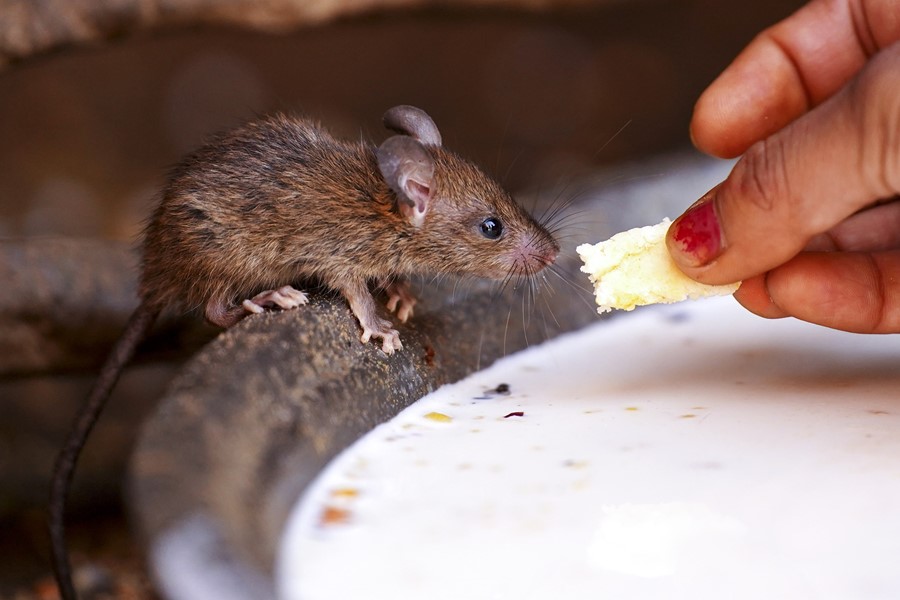For centuries, the little rodents have been the focal point for anxieties around sexuality, hygiene, and the ineradicable power of the oppressed masses. It’s time for a reappraisal!!
Last week, New York City appointed a rat czar. “You’ll be seeing a lot of me and a lot less rats,” said Kathleen Corradi at the press conference announcing her appointment, before proclaiming there is a “new sheriff in town”. For all her tough talk, however, Corradi has indicated she’s open to using humane methods of extermination, as well as focusing on reducing food waste and other ways that people can help to solve the problem.
That this problem exists is something which few New Yorkers would deny. Last year, the number of rat sightings in the city doubled, and the issue has become a symbol of a wider sense of disorder. Rats have been one of the most reviled animals in existence, and surveys today still find that rodents are the least popular form of wildlife. They carry vanishingly few positive connotations: when someone snitches, they are a “rat”; when we feel stifled by capitalism, we are trapped in the “rat race”. With a few exceptions, notably Ratatouille, they are typically anthropomorphised as sly, untrustworthy and grotesque. In canonical works of literature like George Orwell’s 1984 and Albert Camus’ The Plague, they are torture instruments and harbingers of disease. This bad reputation isn’t entirely unearned: while recent research suggests that their role in the Black Death – and other historical epidemics – has been overstated, they do carry diseases (albeit second-hand, via fleas). According to some estimates, they have been responsible for more human deaths than any other mammal and every single war in the last one thousand years combined.
As reported in the New York Times, residents of the city have fallen into rat-filled chasms; had rats crawling out of their toilets and found rat faeces in their beds. There is evidence to suggest that rats are a bigger problem for people in low-income neighbourhoods, and their presence perhaps unsurprisingly correlates with higher feelings of stress and depression – even more so than crime rates.
That being said, I still think the rat is overdue for a critical reappraisal. If you can set aside your prejudice and look at them with an open heart, you’ll see that they’re actually pretty cute – no more loathsome than squirrels or hamsters. They are intelligent animals and, despite being associated with squalor, surprisingly clean. In Ancient Rome, rats were associated with good fortune, while Ancient Egyptians upheld them as a symbol of wisdom. In many cultures today, the rat is still considered a noble animal: the Hindu God Ganesha, for example, is often accompanied by a rat, and the rats which gather by the thousands at India’s Karni Mata temple are considered sacred. In the west, our anti-rat sentiments are bound up with cultural anxieties about hygiene, contagion and excess sexuality. Often, the way we think about rats reveals something very ugly about our own species.
One thing which makes this clear is the well-established history of rats being used as a way to dehumanise and vilify minority groups. This was a recurring motif within Nazi propaganda: the infamous film Der ewige Jude (1940), to name one example of many, juxtaposed footage of Jewish people in the ghettos with swarms of rats, implying that the former were flooding the country, spreading disease and depleting finite resources. In doing so, the film made an explicit case for their extermination. This remains the most extreme example, but similar rhetoric and imagery have appeared in recent history. This has mostly been directed towards migrants, who Donald Trump habitually described as vermin, “infesting” the US. In 2015, a Daily Mail cartoon showed asylum seekers arriving in Europe (notably coded as Muslims) while rats scurried beneath their feet. In a roundabout way, the fact that rats are still being used as a symbol for refugees, migrants and the oppressed masses makes me more sympathetic towards their plight.
While rats have been despised for centuries, this has often come alongside admiration for their cunning and resilience. In Inglourious Basterds, Christopher Waltz’s Nazi villain makes a speech to the same effect (he compares Jewish people to rats, but insists that he means this as a compliment). Tarantino didn’t invent this idea: as far back as the 18th century, professional rat catchers would express begrudging respect for their opponents. They have also been associated with resistance and revolution: the eternal and ineradicable power of the wretched of the earth. As academic John Burt writes in Rat, “They flood over and gnaw through borders real and imagined. They have a dark vitality that, despite all the control and the killing, we do not overcome.” According to one medieval myth, there was once an evil bishop who herded the starving poor into a barn and set them alight. He soon got his comeuppance, however, when an army of rats chased him, cornered him in his tower, and gnawed away his flesh until there was nothing left but bones. Long before “eat the rich” became a trite internet slogan, rats were actually doing the work.
As a gay man, the rat is not my enemy, but my comrade in abjection
Rats have also historically been loathed for their promiscuity and boundless sexuality. In the Victorian era, they were compared to the “nomad hordes” of the urban poor, who were similarly reviled for their lustful ways; some members of the elite (including, you might recall, the fictional Ebenezer Scrooge) worried that excess breeding among the lower orders would lead to a crisis of overpopulation. While rats have typically been despised for their staggering reproductive capacity, they have also been associated with queerness. In Rat Bohemia, Sarah Schulman’s 1995 novel about the AIDS crisis, rats are both a symbol of Reagan-era neglect and the urban dispossessed themselves: like rats, people with AIDS were dehumanised, positioned as a source of contagion and, if only by neglect, marked out for eradication.
Rats have long been conceived of as a harbinger of plague; a threat to children, and creatures who exist “continually under the furore of love” (as Victorian writer Charles Fothergill put it, suggesting that their carnality posed an apocalyptic threat). To this day, these are all things which homophobes say about queer people. As a gay man, the rat is not my enemy, but my comrade in abjection.
Just as rats have been symbols for the oppressed, they have also embodied forces of oppression. They are humanity’s twin, our mirror species, and whatever negative feelings we have towards them no doubt contain a trace of projection. We share a symbiotic relationship: they have profited from our wars, imperial conquests, rapacious consumption, wasteful habits, and, more so than just about any other species, the destruction we have wrought on the environment. As one of the only animals to have thrived under human domination, they have earned our respect as a worthy opponent.
Whatever crimes they may be guilty of, the rat is, above all, a scapegoat for our sins. As Ted Hughes wrote, they are the “the Little Jesus in the wilderness/ carrying the signs of the house/ into every dish, the hated one.” And so, we must peer into the depths of our souls and ask: is it really rats that we hate? Or is it ourselves?




